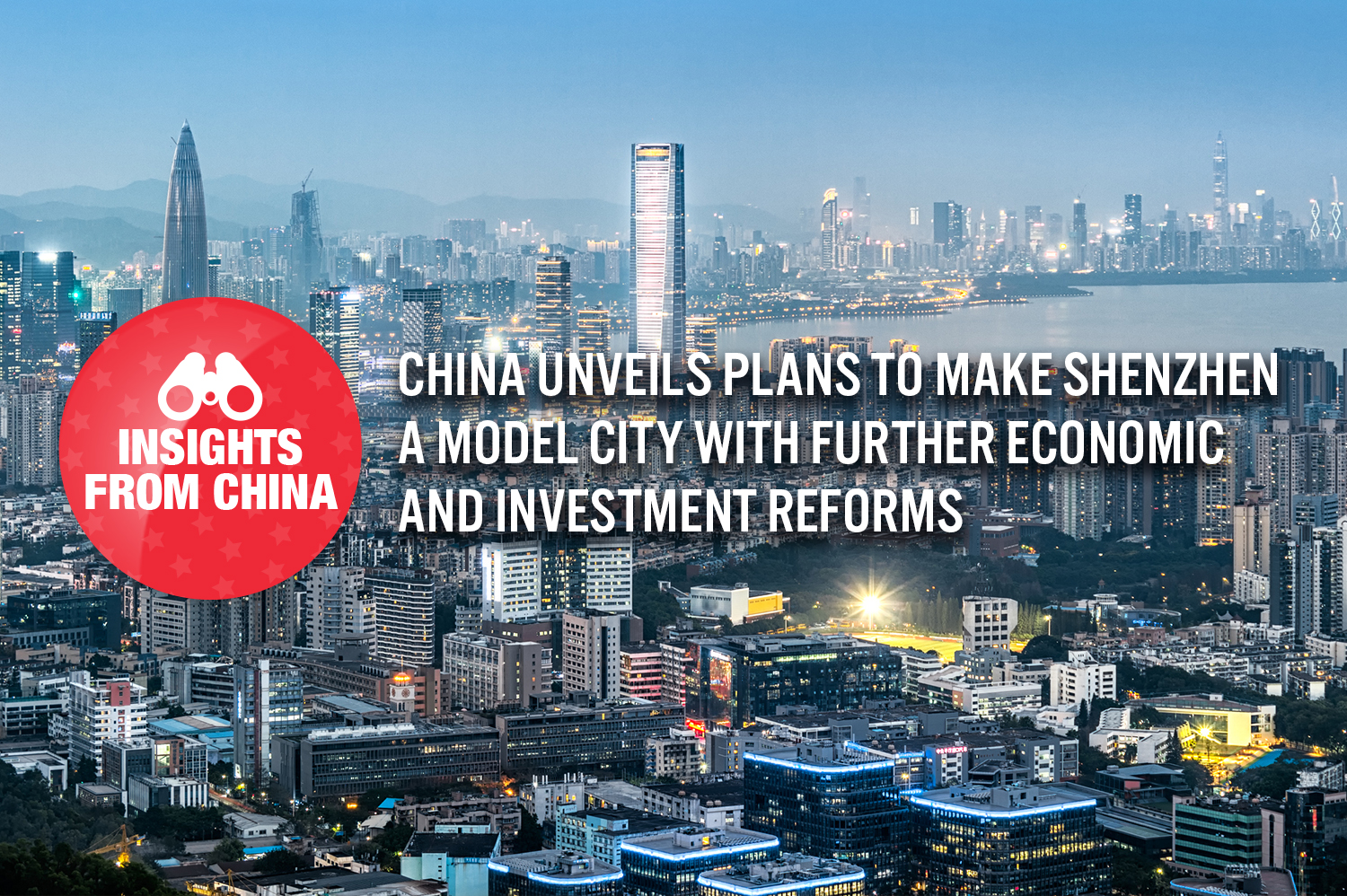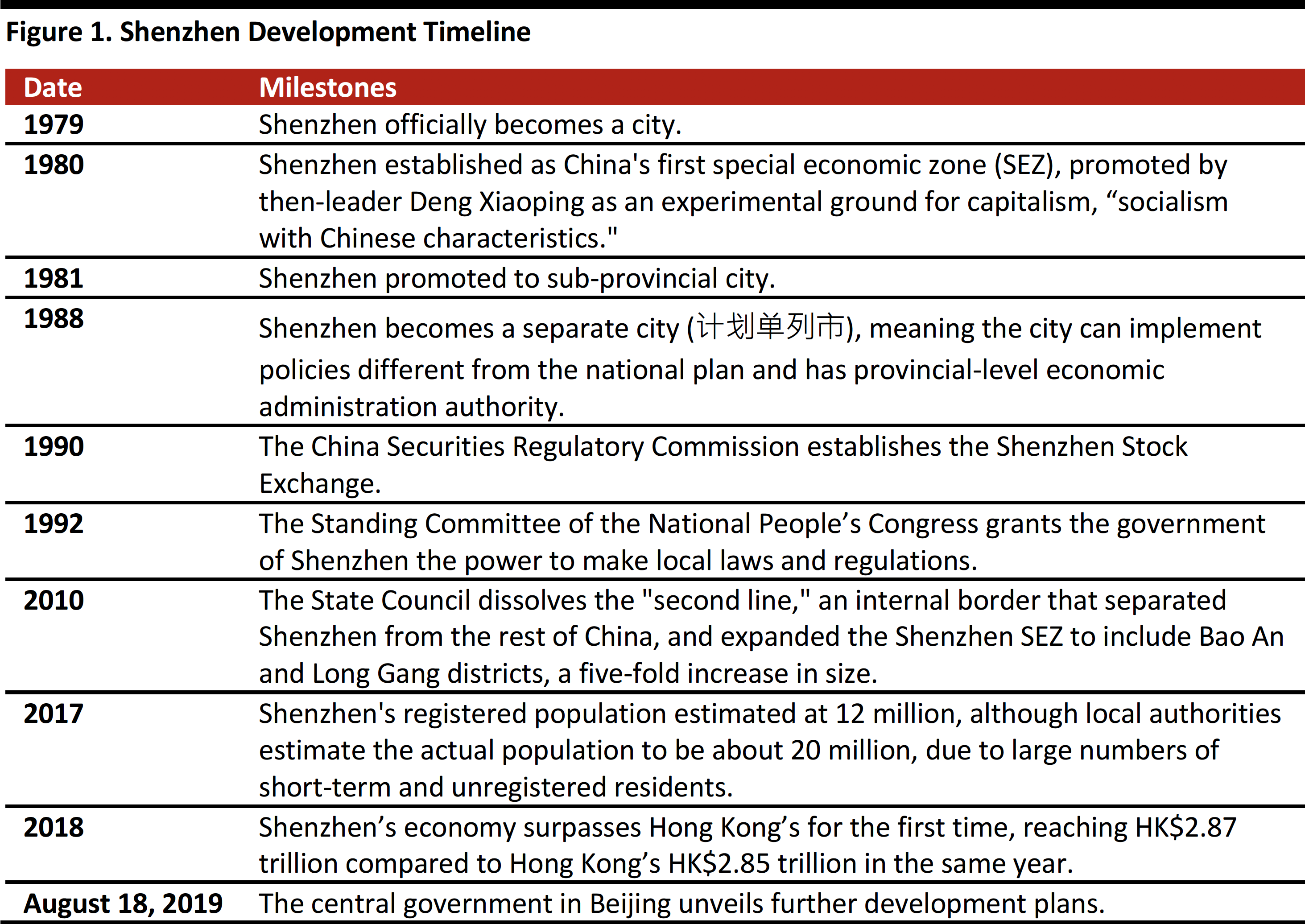
albert Chan
In the 1970s, Shenzhen was a small fishing village on the other side of the border from what was then the British colony Hong Kong. Then, Beijing established it as one of its first “special economic zones,” areas in which normal communist constraints would be suspended to experiment with more liberal capitalist practices, including allowing foreign investment. Fast forward to 2019 and Shenzhen is a bustling city of over 12 million, the third-busiest port in the world with a thriving stock market and an economy that recently eclipsed Hong Kong.
Now, Beijing is looking to boost its status even further, based on plans announced by China’s State Council and the Central Committee of the Communist Party of China on August 18.
Beijing’s Grand Development Plan for Shenzhen
Beijing wants Shenzhen to become one of the leading cities in the world by 2025, and a “global benchmark city with competitiveness, innovation, and influence” by 2050, according to the plan released on August 18.
To reach these targets, Beijing will support local research and development in 5G telecommunications, artificial intelligence and biomedical laboratories, supported by a new state-run institute for biomedical research named the Academy of Medical Sciences.
Beijing will also further ease barriers for foreign investment in Shenzhen: China generally limits the percentage of foreign ownership in local companies.
Shenzhen will also actively court foreign talents by making it easier for foreigners to get work and residency visas, which would allow them to become legal representatives of companies in China. Legal representatives is the person with the power to bind the company in entering into contracts and who represents the company in submitting reports to Chinese regulatory bodies.
Shenzhen already hosts many Chinese technology giants, such as Huawei, Tencent and telecommunications company ZTE.
Shenzhen will Play a Bigger Role in the Greater Bay Area
With new development plan laid out for Shenzhen, Beijing aims to raise Shenzhen’s status in the Greater Bay Area.
The Greater Bay Area blueprint, released in early 2019, is designed to create a mega-hub in the Pearl River Delta to support economic growth, reform and innovation. It includes the Hong Kong and Macau Special Administrative Regions, and nine other municipalities in the surrounding region in Guangdong province.
[caption id="attachment_95573" align="aligncenter" width="700"] Source: Government documents[/caption]
Key Insights
Beijing’s new development plan gives Shenzhen an even more favorable position, setting it up for continued growth at the heart of the Greater Bay Area.
Source: Government documents[/caption]
Key Insights
Beijing’s new development plan gives Shenzhen an even more favorable position, setting it up for continued growth at the heart of the Greater Bay Area.
 Source: Government documents[/caption]
Key Insights
Beijing’s new development plan gives Shenzhen an even more favorable position, setting it up for continued growth at the heart of the Greater Bay Area.
Source: Government documents[/caption]
Key Insights
Beijing’s new development plan gives Shenzhen an even more favorable position, setting it up for continued growth at the heart of the Greater Bay Area.